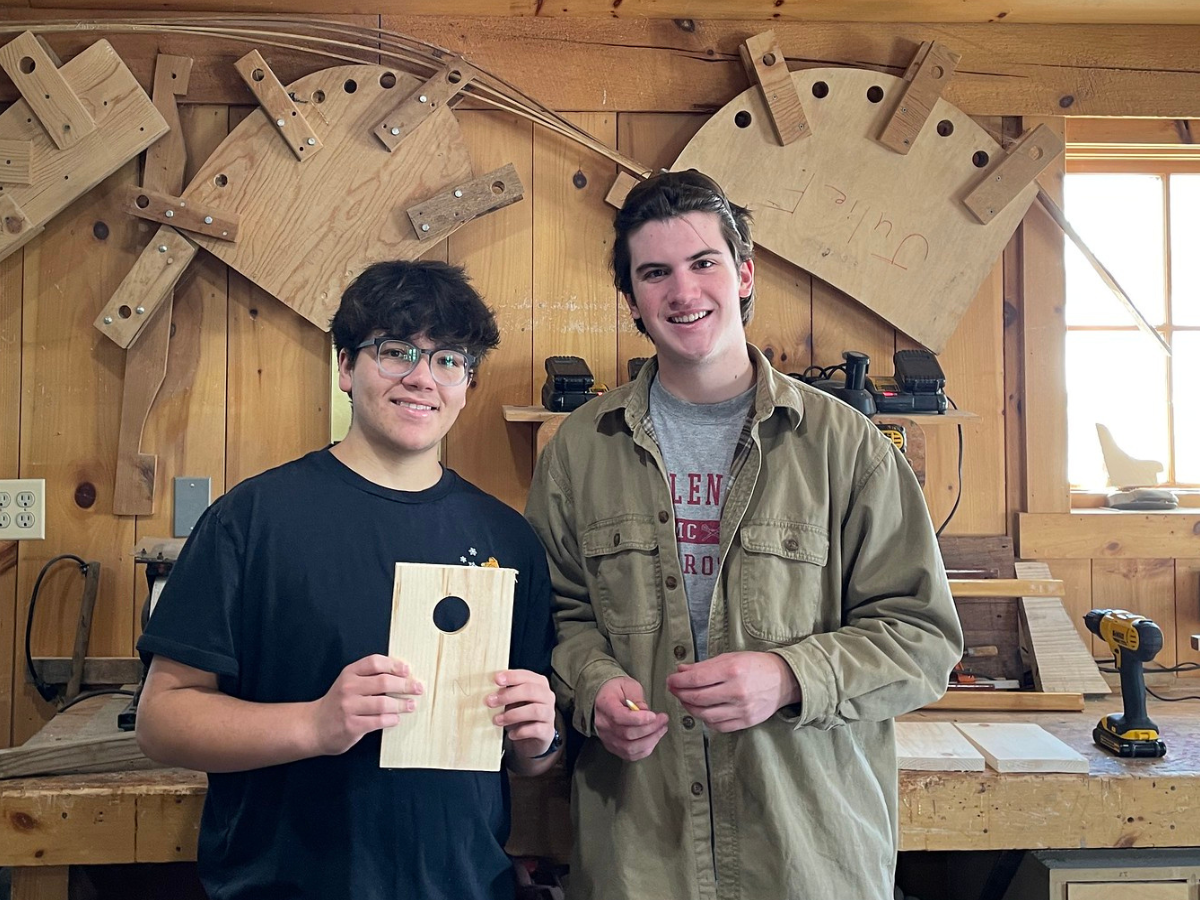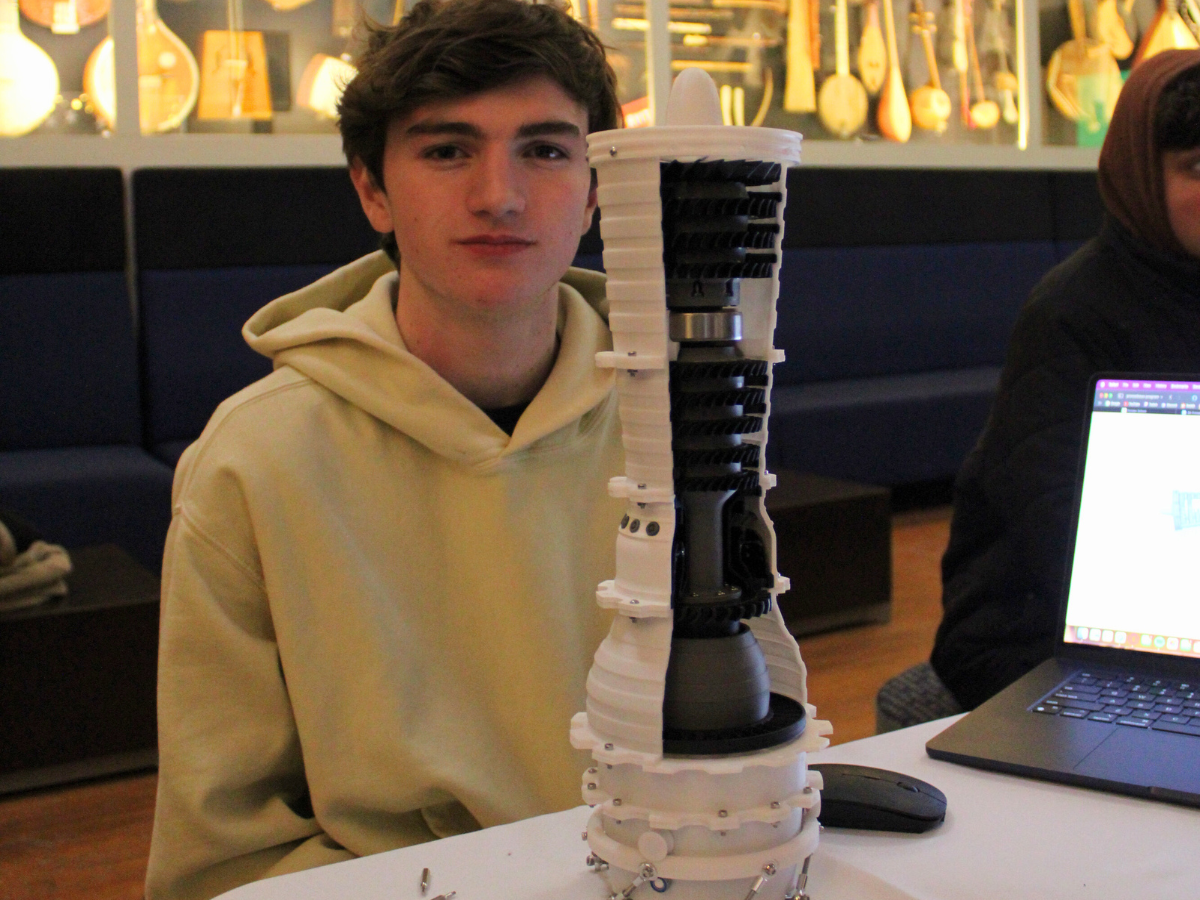During a recent community service project, several seniors at Forman built new bluebird nesting boxes. The boxes are additions to Forman’s Bluebird Trail, which consists of 11 bluebird nesting boxes, each with GPS coordinates. The trail is carefully monitored to track bluebird nesting activity and support the species’ population recovery.
According to the Connecticut Department of Energy and Environmental Protection, “the Eastern Bluebird declined in numbers from the late 1800s through the 1980s. One significant contributing factor to this decline was the lack of suitable nesting cavities needed by the bluebird to successfully raise young.”
Wendy Welshans P’24, Science Teacher and Director of the Rainforest Project and Outdoor Leadership, leads the Bluebird Trail initiative at Forman. Wendy says, “[Bluebirds] are coming back with the help of these boxes and everyone putting up boxes. When you have a lot of edge habitat, it really helps.”
Forman initially introduced the bluebird boxes on campus during the Zika virus outbreak, as bluebirds are insectivores that help control bug populations. The boxes are made of pine and painted a light color to reflect heat, so bluebird babies do not overheat inside.
While the primary goal of the Bluebird Trail is to help increase the species’ population, Wendy emphasizes the hands-on learning experience it provides students.
“For the kids to be involved in a wildlife monitoring program, it breeds interest,” she says. “They’re not just focusing on what’s happening around them or on their phones.”
The data collected at Forman is submitted to databases via Cornell or the state to assist in broader monitoring.
Forman’s campus is also home to more than 30 bat boxes, which also aid in decreasing insects.




